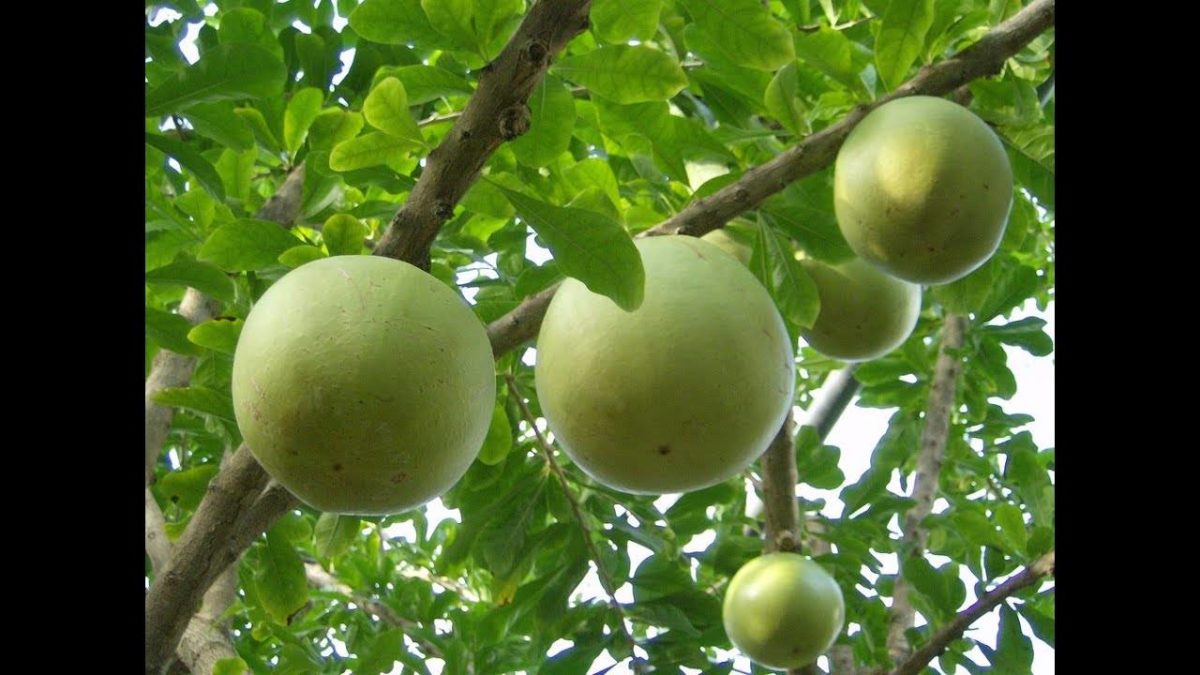Table of Contents
Definition of Crescentia Cujete
Crescentia cujete, usually known as the Calabash Tree, is a flowering plant native to Central and South America.
It is a dicotyledonous plant with simple leaves, which are alternating or in fascicles on short shoots.
It grows wild in India and also known as Miracle Fruit.
This ornamental tree of the Bignoniaceae family is popularly known as the pumpkin tree.
An Italian naturalist of the thirteenth century gave its scientific name, and the epithet cujete comes from its popular word in Brazil.
It has many other famous names depending on the territory, such as Palo de huacal, totumo, guiro, gua, or jícaro.
Main features
- It is a native tree of Mexico and Central America.
- It has a height that ranges between 4 and 6 meters, it has twisted branches, and its crown is open.
- Its fruit has a similar appearance to the pumpkin and a spherical shape.
- The flowering of its evergreen leaves occurs during the spring period, and the recommended sowing period is also spring.
- The seed collection period is in October (the most common sowing method is broadcast seedling).
- Before planting, a tracing process is recommended during the rainy season and weeding.
Use of Crescentia Cujete (Jicaro)
- The jícaras are hand-made containers that are made from the bark of the jícaro.
- In some Mexican regions, especially in Tabasco, jícaras continue to drink chocolate or pozol, a traditional drink of the Nahutl culture.
- On the other hand, these pieces are of high value by tourists, as they are hand-made, and each one of them carries a decorative element of popular culture.
- Other pieces are also made with the bark of the jícaro, folk crafts, musical instruments, and traditional kitchen utensils.
Medicinal properties
- Trees have been and are an inexhaustible source of healing remedies.
- The Crescentia cujete has a wide range of healing functions:
- Jicaro juice cures skin problems.
- Seeds of the fruit help in the treatment of anemia and nutritional deficiency,
- The seeds help to stop bleeding, relieve earache, and improve the quality of breast milk,
- Extract of Crescentia cujete helps to combat asthma and as substance antibiotic and
jícaro syrup relieves cough and sore throat. - Oil from Jicaro seeds makes some varnishes.
- In some Central American territories, nutritious biscuits are made with its seeds and vegetable milk and horchata.
- Children enjoy the sweets made with their fruit.
Leaves of Crescentia Cujete
- Association of Official Analytical Chemists (AOAC) examined the Mineral, and proximate analysis of Crescentia Cujete (Ugbugba) leaves.
- The leaves contained moisture, ash, crude protein, crude lipid, natural fiber, and carbohydrates.
- The findings showed that Crescentia Cujete leaves are a source of nutrients for edible purposes, an excellent Na/K ratio for lowering blood pressure.
Morphological and genetic consequences Crescentia cujete
- The main driving force of domestication depends on the human perception of intraspecific variation.
- It operates through management practices that drive morphological and genetic divergences concerning wild populations.
- This study analyzed the recognition of varieties of Crescentia cujete by Maya people concerning preferred plant characters.
- It documents ongoing artificial selection processes influencing chloroplast DNA haplotype distribution in sympatric wild and home-garden populations.
Precautions before taking Crescentia cujete
- A physician or other healthcare practitioner discussese ant concerns regarding the herbs use for aspecific situation..
- The use of Crescentia cujete should not replace regular medical care, but only under a doctor’s supervision.
- In addition to the possible side effects, this herb is not beneficial in patients with certain medical conditions.
- Some over-the-counter or prescription drugs may not work well when taken with herbal supplements.
- Many healthcare professionals doubt such nutritional supplements’ safety, as there is no regulatory body to guarantee the effectiveness.
Medical uses of Crescentia Cujete
- Crescentia cujete is a medicinal plant, although this tree’s fruits is not safe for humans.
- Some of the more popular uses for this herb include treating respiratory illnesses, upset stomach, and intestinal disorders.
- It helps to stimulate insulin production, fights bacterial strains such as Staphylococcus aureus, and contributes to blood pressure regulation.
- Crescentia cujete treats Respiratory illnesses such as bronchitis, influenza, or asthma
- This herb appears to reduce coughs and spasms caused by this medical condition effectively.
- Some studies suggest that staph infections may respond to treatment with Crescentia cujete.
- Crescentia cujete also treats a variety of gastrointestinal disorders.
- Bowel spasms often cause pain and diarrhea symptoms, occurs while using this herbal remedy.
- In some cases, a tea made with this herb helps in inducing vomiting.
- People with hypertension or diabetes may benefit from using Crescentia cujete.
- It is a belief that the constant use of this herb lowers blood pressure and increases insulin production.
- However, some cultures believe that this tree’s fruit and bark helps cleanse the blood of all unhealthy toxins.
Special care for a Pregnant Woman
-
- A pregnant woman must refer to a doctor before using this herbal supplement.
- Pregnant women should not use the supplements made from this herb, as it could induce labor.
- Historically used to induce labor, uterine contractions can develop that can put the unborn baby at risk.
- Premature delivery or miscarriage are genuine concerns when using this herb as a dietary supplement.

